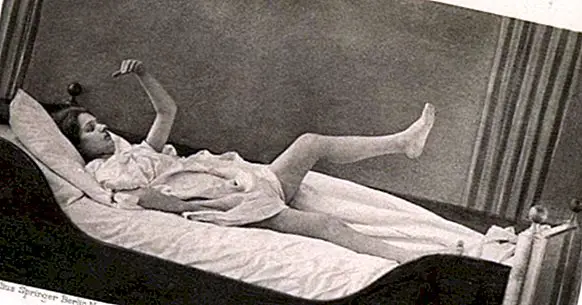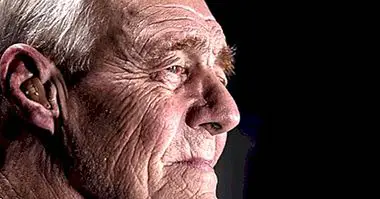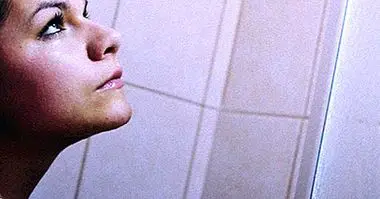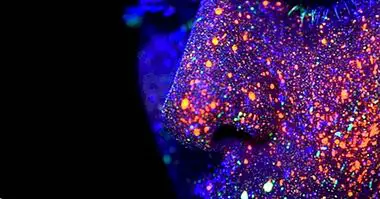Catatonia: causes, symptoms and treatment of this syndrome
It is possible that we have ever seen in a movie, read in a book or even seen in real life some psychiatric patients who remain in a state of absence, rigid and immobile, dumb and unreactive, and can be placed by third parties in any conceivable posture and remaining in that position like a wax doll.
This state is what is called catatonia , a syndrome mainly motor of diverse causes and that affects patients with different types of both mental and medical disorder.
- Related article: "The 15 most frequent neurological disorders"
Catatonia as a syndrome: concept and symptoms
Catatonia is a neuropsychological syndrome in which a series of psychomotor symptoms occur, often accompanied by cognitive, awareness and perception alterations.
The most characteristic symptoms of this syndrome are the presence of catalepsy or inability to move due to a state of muscular rigidity that prevents muscle contraction, the waxy flexibility (a state of passive resistance in which the subject does not flex the joints by itself, staying as it is if it is placed in a certain way with the same position and position unless it is changed and in which the members of the body remain in any position in which another person leaves them), silence, negativism before the attempt to make the subject perform any action, ecosymptoms (or repetition / automatic imitation of actions and words carried out by your interlocutor), stereotypes, perseveration , agitation, lack of response to the environment or stupor.
Your diagnosis requires at least three of the aforementioned symptoms , for at least twenty-four hours. As a general rule, anosognosia is presented with respect to motor symptomatology.
Some psychological symptoms
The subjects with this alteration often present intense emotionality , difficult to control, both positively and negatively. Although motor immobility is characteristic, patients sometimes leave it in an emotional state of great intensity and with a high level of movement and agitation that can lead them to self-harm or to attack others. Despite their anosognosia regarding their motor symptoms, they are nonetheless aware of their emotions and the intensity with which they present themselves.
Catatonia can occur in different degrees of greater or lesser severity , producing alterations in the patient's vital functioning that can make it difficult to adapt to the environment.
While the prognosis is good if it starts to be treated soon In some cases it can be chronic and can even be fatal in certain circumstances.
Presentation patterns
Two typical presentation patterns can be observed, one called stuporous or slow catatonia and another known as agitated or delirious catatonia .
The first one is characterized by a state of stupor in which there is absence of functions related to the environment; the individual remains paralyzed and absent from the environment, the common symptoms being catalepsy, waxy flexibility, mutism and negativism.
With regard to agitated or delirious catatonia, it is characterized by symptoms more linked to activation such as ecosymptoms, the realization of stereotyped movements and states of agitation.
Possible causes of catatonia
The causes of catatonia can be very diverse. When considered as neuropsychological syndrome the presence of alterations in the nervous system must be taken into account .
Research shows that patients with catatonia they have some type of dysfunction in part of the right posterior parietal cortex , which is consistent with the fact that people with catatonia are able to initiate movements correctly (so that the supplementary motor area is usually preserved) and the fact that there is anosognosia with respect to motor symptoms. The inferior lateral prefrontal of these subjects also usually presents alterations, as well as the medial orbitofrontal, which also explains the presence of occasional raptus and emotional alterations.
At the hormonal level, the role of GABA is explored, which has been shown to be altered in patients with catatonia, since it has a lower level of attachment to brain structures. Glutamate, serotonin and dopamine also seem to play a relevant role in this disorder, but a higher level of research is needed as to exactly how they influence .
- Maybe you're interested: "The lobes of the brain and its different functions"
Potential organic causes
One of the first causes that must be explored in the first place is the organic type, since catatonia is a symptom present in a large number of neurological alterations. In this sense we can find that temporal lobe epilepsy, encephalitis, brain tumors and strokes Causes of this syndrome are possible and should be treated immediately.
In addition to this infections such as septicemia or those caused by tuberculosis, malaria, syphilis or HIV can also cause this state. Hepatic and renal failure, hypothyroidism, severe complications of diabetes such as ketocytosis or even severe hypothermia are other conditions that have been linked to the onset of catatonia.
Other biological causes can derive from the consumption and / or abuse of psychoactive substances , whether drugs or psychotropic drugs. For example, it is common for catatonia to appear in the neuroleptic malignant syndrome, a serious and potentially fatal syndrome that in some cases appears when antipsychotics are administered.
Causes from psychodynamics
In addition to the previous causes, some authors related to the Freudian tradition have proposed that in some cases catatonia may have psychological aspects of a symbolic nature as a cause.
Specifically, it has been proposed that catatonia may appear as regression to a primitive state as a defense mechanism against traumatic or frightening stimuli. The explanation is also used that it can also be given as a dissociation response (which in fact is observed in some patients with post-traumatic stress disorder).
However, we must bear in mind that these explanations are based on an epistemology that is far from the scientific, and therefore are no longer considered valid.
Mental disorders in which it appears
Catatonia has long been a syndrome that has been identified with a subtype of schizophrenia, catatonic schizophrenia . However, the presence of this syndrome has also been observed in numerous disorders, both mental and organic.
Some of the different disorders to which it has appeared linked are the following.
1. Schizophrenia and other psychotic disorders
It is the type of condition to which catatonia has traditionally been linked, up to the point of considering catatonia as a specific subtype of schizophrenia. Apart from schizophrenia may appear in other disorders such as brief psychotic disorder .
- Related article: "The 6 types of schizophrenia and associated characteristics"
2. Mood disorders
Although it has been linked almost since its inception with schizophrenia, the different studies conducted with respect to catatonia seem to indicate that a high number of catatonic patients present some type of mood disorder, especially in manic or depressive episodes . It can be specified in both depressive and bipolar disorders.
3. Post Traumatic Stress Disorder
Posttraumatic Stress Disorder has also occasionally been associated with catatonic states.
4. Consumption, intoxication, or substance abstinence
The administration or uncontrolled cessation of certain substances with effect on the encephalon can generate catatonia.
5. Autism spectrum disorder
Some children with developmental disorders such as autism may manifest catatonia comorbidly.
- Related article: "The 4 types of Autism and its characteristics"
Consideration to date
Today the latest revision of one of the main psychology diagnostic manuals, the DSM-5, has removed this label as a subtype of schizophrenia to convert catatonia into an indicator or modifier of the diagnosis of this and other disorders (such as mood). The classification as a neuropsychological syndrome has been added separately from other disorders.
Treatment to apply
Because the etiology (causes) of catatonia can be diverse, the treatments to be applied will depend to a large extent on what produces it. It must analyze its origin and act in a differentiated way depending on which is . Apart from this, the symptoms of catatonia can be treated in different ways.
At the pharmacological level the high utility of benzodiazepines has been proven, which act as GABA agonists in acute cases. The effects of this treatment can eventually reverse the symptoms of most patients. One of the most effective has shown is lorazepam, which is in fact the treatment of first choice.
While it may seem due to its link with schizophrenia that the application of antipsychotics may be useful, the truth is that it can be harmful (remember that catatonia can appear in the neuroleptic malignant syndrome that is precisely caused by the administration of said drugs).
Another therapy used is electro-convulsive therapy , although it is usually applied if the treatment with benzodiazepines does not provoke a response. It also raises the possibility of using together benzodiazepines and electro-convulsive therapy, to be able to enhance the effects.
On a psychological level Occupational therapy can be performed to stimulate the patient, as well as psychoeducation for the patient and their environment in order to provide information and strategies for action and prevention. The treatment of affective symptoms is also very helpful, especially in cases derived from psychiatric disorders.
Bibliographic references:
- American Psychiatric Association. (2013). Diagnostic and Statistical Manual of Mental Disorders. Fifth edition. DSM-V. Masson, Barcelona.
- Arias, S. and Arias, M. (2008) Catatonia: Darkness, Dilemma, Contradiction. Spanish Magazine of movement disorders; 9: 18-23.
- Crespo, M.L. & Pérez, V. (2005). Catatonia: a neuropsychiatric syndrome. Colombian Journal of Psychiatry. vol. XXXIV, 2. Bogotá.



















